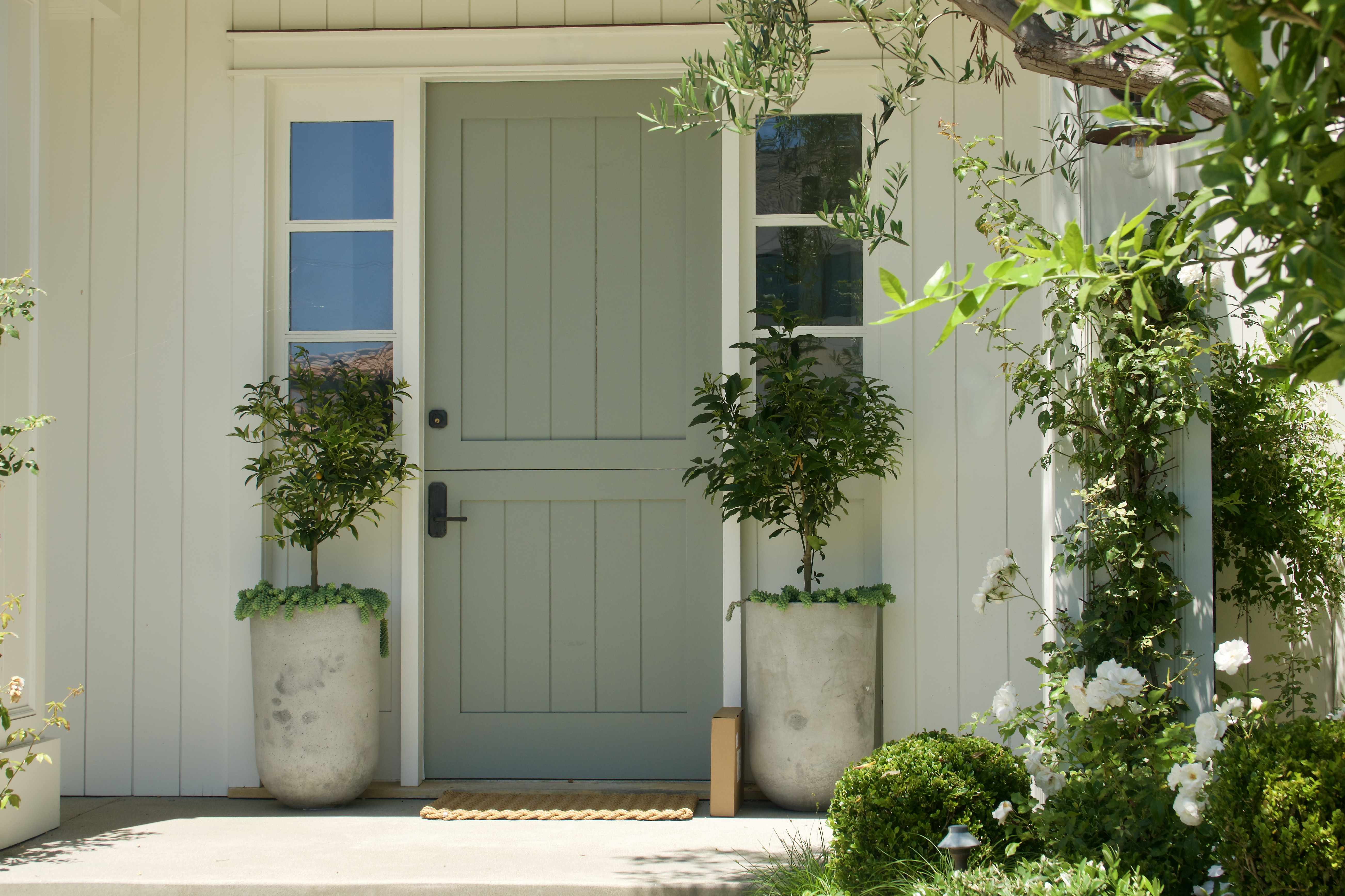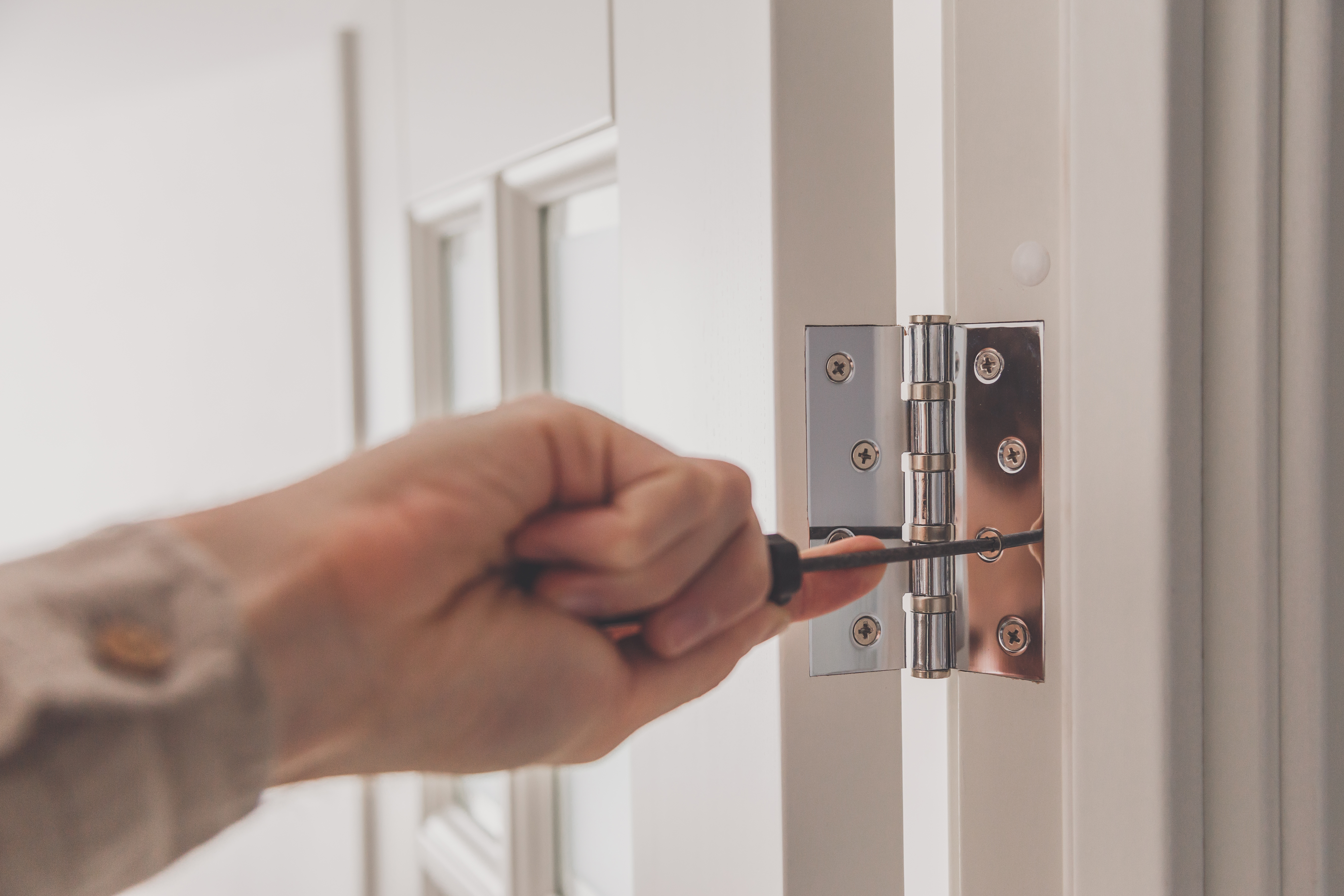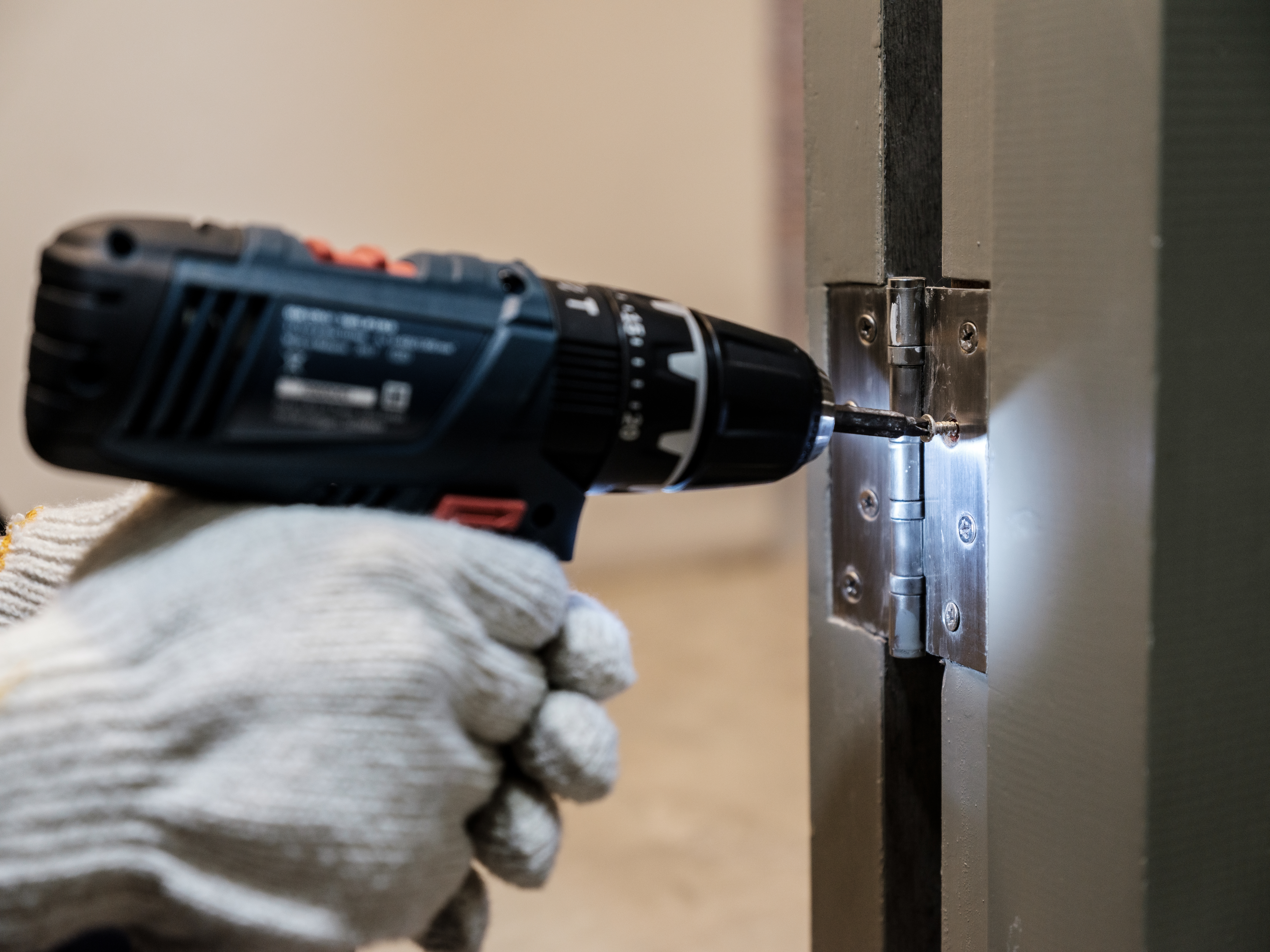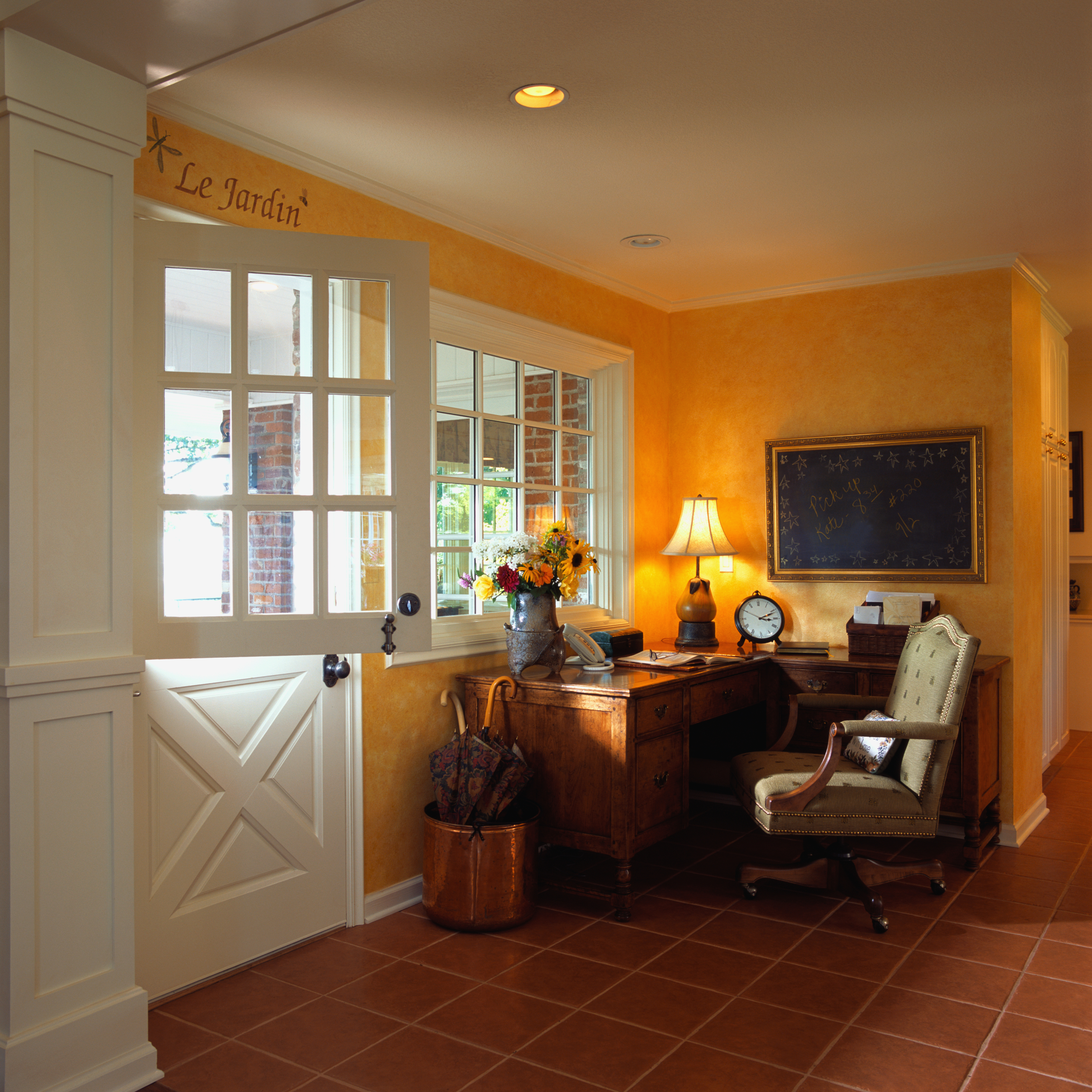
Screen door installation costs depend on size, type of frame material, and the number of doors. Here’s everything you need to know.
Open the door to new design possibilities


Turning a regular door into a Dutch door can feel intimidating, but it’s actually a pretty straightforward project for handy homeowners. With the right prep, a steady hand, and some basic tools, you can create a functional, charming door that refreshes the whole vibe of your space. This guide walks you through every step so you can pull it off without wrecking your door (or your weekend).
Not all doors can withstand being cut in half. You want a solid wood door because it needs to stay sturdy after you slice it in two. Hollow-core doors will fall apart or feel wobbly, so they’re not usually worth the hassle.
Also, make sure your door already fits the frame well and opens and closes without sticking or sagging. If it’s already struggling to open or close, you’ll want to fix that before cutting it up.
With the door still attached to its hinges, measure upward from the bottom of the door to where you want to cut the door in half. Most Dutch doors are cut around 36 inches from the bottom.
Use a pencil to mark the height clearly at multiple points across the door. Then use a level to ensure all markings line up straight before drawing a straight horizontal line across the door face. This line will serve as your guide for cutting the door, so double-check that it’s perfectly straight.

Once your cut line is marked and you’re happy with the placement, remove the door from its hinges and take it down. Use a screwdriver or drill to remove the hinge pins or unscrew the hinges directly. Recruit a helper if the door is heavy or awkward (which it probably is). Then, lay it flat across two sawhorses or a sturdy table so it’s stable and ready for cutting.
Line up your circular saw with the cut line you drew during step two, then double-check that everything’s stable and square. Make sure the door is clamped down or otherwise firmly in place, then cut slowly and steadily along the line. Let the saw do the work—don’t rush it.
After cutting, you’ll be left with two raw edges that probably look pretty rough. If the cut left behind any gaps, dents, or splintered spots, now’s the time to patch them up. Use wood filler to smooth over any imperfections along the cut edges or anywhere else that needs touching up. Apply it with a putty knife, then let it dry completely.
Regardless of whether or not you filled imperfections, grab some medium-grit sandpaper to smooth out the roughest bits, then follow up with fine-grit to get everything nice and even. And don’t forget the corners because they’ll splinter if you leave them sharp.
The goal is for the top of the bottom half and the bottom of the top half to sit flush without snagging or catching.
Once everything’s sanded smooth, you should paint, stain, or seal the freshly cut edges to match the rest of the door and protect the wood. Raw edges are vulnerable to moisture and warping, especially if it’s an exterior door.
If you’re painting, use primer first, then follow up with your topcoat. If you’re staining or sealing, apply an even coat and let it soak in. Whatever finish you use, let it dry fully before moving on. Don’t rush this part, or you’ll end up with tacky edges that stick.

Cutting the door in half means each section now needs its own support, so you’ll need to install one more hinge, usually near the top edge of the bottom half or the bottom edge of the top half, depending on where the existing hinges are. Mark your placement carefully so it lines up with the existing hinges, then pre-drill your holes to avoid splitting the wood. Finally, snugly screw the new hinge into place.
Next, reinstall the bottom half of the door on the existing lower hinges. Line it up carefully with the frame, and use shims if you need to adjust the height or spacing. Then screw the hinges back into place.
Open and close it a few times to make sure it swings smoothly and doesn’t scrape the floor or stick. If it’s not right, fix it now before moving on. The top half depends on this part being solid.

Once the bottom half is swinging smoothly, it’s time to hang the top. Line it up so it sits flush with the bottom half when closed. Double-check the spacing between the two so they don’t rub or leave a big gap.
Use the original top hinge (from before the cut) to secure the upper edge of the top half to the frame. If you added the new hinge to this piece instead of the bottom, secure that one too. Check that it opens and closes smoothly and that the two halves look aligned when shut. Make any adjustments before locking it in.
To keep the two halves working as a full door when needed, you’ll need to connect them with a latch or surface bolt. Install the latch or bolt on the interior side of the door, usually along the vertical edge where the two halves meet.
With the door closed, mark where the latch should go so it lines up cleanly between the top and bottom sections. Screw the hardware into place, making sure it opens and closes without resistance.
Turning a regular door into a Dutch door isn’t the hardest DIY project out there, but there are a few common mistakes that can throw the whole project off if you’re not careful. Here’s what to watch out for:
Using the wrong type of door: Hollow-core doors might seem easier to work with, but they won’t hold up once you cut them. Stick with solid wood for strength and durability.
Cutting without leveling: If your cut line isn’t perfectly straight, the halves won’t align, and the door will look crooked or rub when it closes. Always use a level and check it twice.
Skipping the extra hinge: Each half needs solid support. Forgetting to add a hinge will make the door feel loose, and you’ll probably end up rehanging it later.
Ignoring edge finishing: Raw wood edges will swell, splinter, or soak up moisture over time if you don’t seal or paint them properly. Don’t skip that step just because you’re eager to rehang the door.
Poor alignment during reinstallation: If the halves don’t sit flush with each other or the frame, the door won’t swing properly. Use shims and take your time adjusting as needed.
Building a Dutch door yourself can range from $25 to $150 in materials if you already have the right tools. That includes wood filler, sealant, or paint, and new hardware like a latch or hinge. But if you don’t have a circular saw, drill, sawhorses, or clamps, renting or buying tools can quickly raise your total.
The cost to hire a carpenter usually ranges from $75 to $150 per hour, so you can save a good bit of money by tackling this project yourself. However, this project requires precision cutting, clean alignment, and proper sealing to work well and look right. So if you’re not sure your tools or patience are up for the job, hiring a door installer might be your best bet.
From average costs to expert advice, get all the answers you need to get your job done.

Screen door installation costs depend on size, type of frame material, and the number of doors. Here’s everything you need to know.

French doors upgrade your space and fill it with natural light. Use this guide so that you can accurately budget the cost to install French doors.

The cost to install a pocket door includes a few more line items than other designs. Here's what to expect from pocket door costs at each stage in the process.

Are you curious whether a storm or security door is right for your home? We explore the differences and benefits of these two types of doors.

There are many types of interior doors, from swinging to folding and sliding. This article breaks down each to help you find the right door for your needs.

If you’re unsure how to repair a door jamb, we’ve got steps for the most common problems and to transform your door from an eyesore to a welcoming friend.